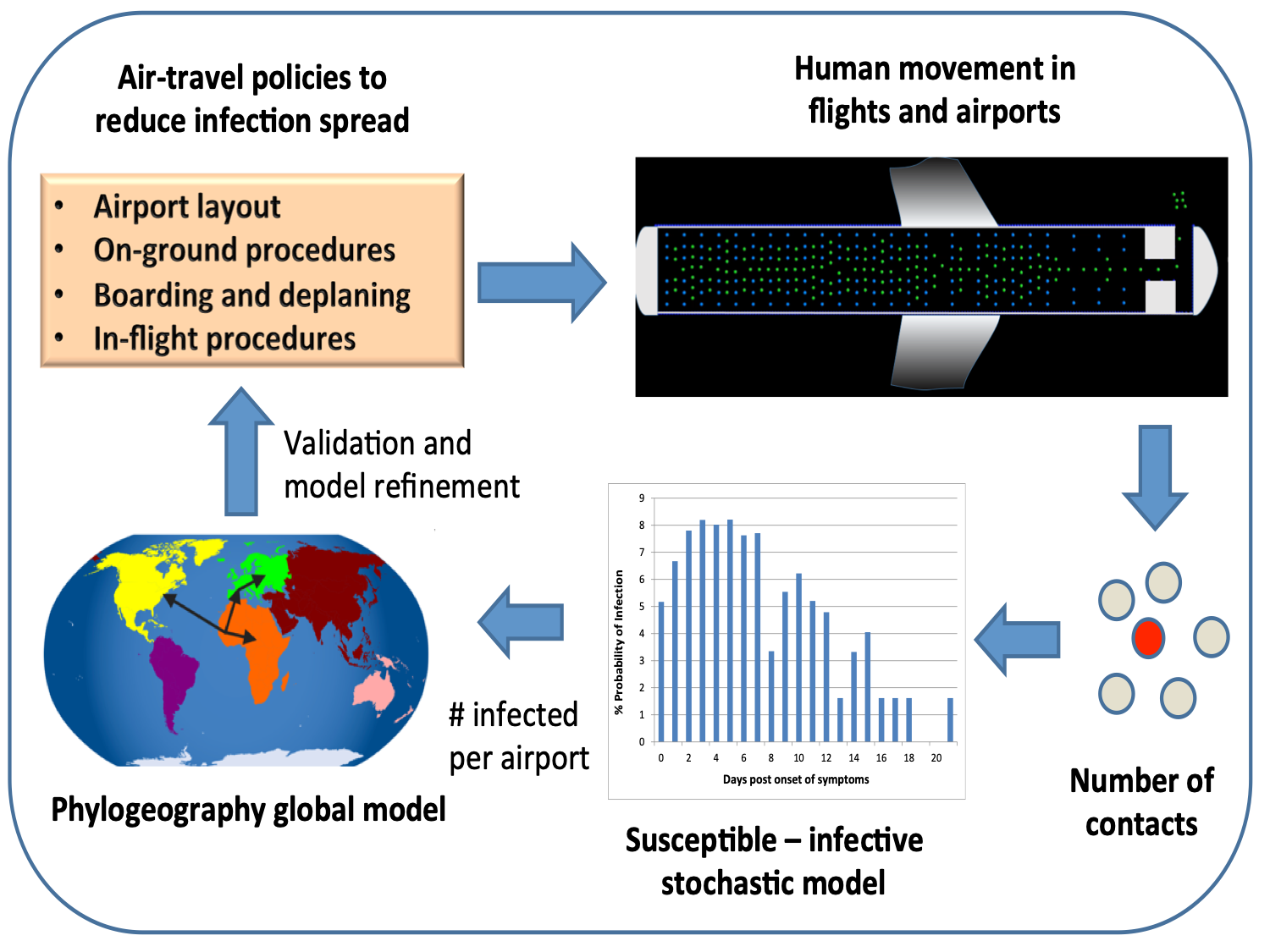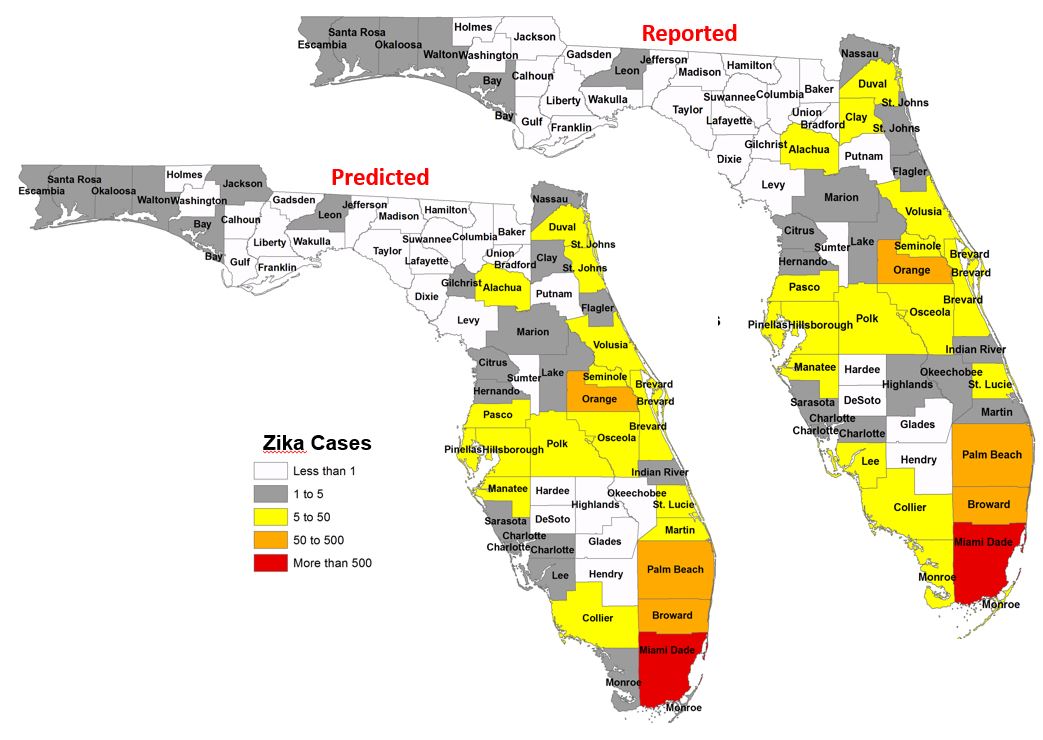Viral Infection Propagation Through Air-Travel
Science-Based Policy Analysis
Goals
The VIPRA project is an interdisciplinary multi-university effort to analyze new strategies for reducing the risk of spread of viral infections through air-travel. Our goals include disease spread during air travel and those imported through air travel. We accomplish these by integrating accurate models and new data sources with a computational infrastructure that is designed for simulation-based policy analysis on some of the most powerful supercomputers in the world.
Challenges
The VIPRA approach is based on the realization that inherent uncertainties in human behavior make it difficult to predict the consequences of any particular policy choice accurately. Instead, it is more fruitful to determine a range of possible outcome scenarios, identify potential vulnerabilities, and evaluate the relative merits of feasible policy choices. In addition, conventional data sources do not provide the required spatial and temporal resolution. New data sources, such as social media, on the other hand, suffer from limitations such as bias and noise.
Approach
VIPRA includes a fine-scale model that tracks individual passenger movement in locations with crowds, such as airplanes and airports, based on social dynamics and empirically observed passenger behavioral characteristics. Sources of uncertainty are parameterized, and simulations performed to cover the range of possibilities. Results from individual flights are linked with genetic information in a phylogeographic model to evaluate the likelihood of epidemics and to identify pathways for the spread of diseases. We incorporate results from novel data sources, such as social media data, into our models, to improve spatial and temporal resolution while accounting for demographic heterogeneity. Our analysis is validated with empirical data to ensure that the guidance offered by us is likely to be realistic.
The massive computational demand of such analysis is met through computational allocations on some of the world’s most powerful supercomputers. Our models will be integrated into a software infrastructure targeted for decision support so that decision-makers can effectively evaluate “what-if” scenarios.
Outcomes
The above techniques will help achieve VIPRA’s goal of deploying a comprehensive and accurate decision-support infrastructure that can be used to eliminate the threat of any new outbreak of an epidemic.



